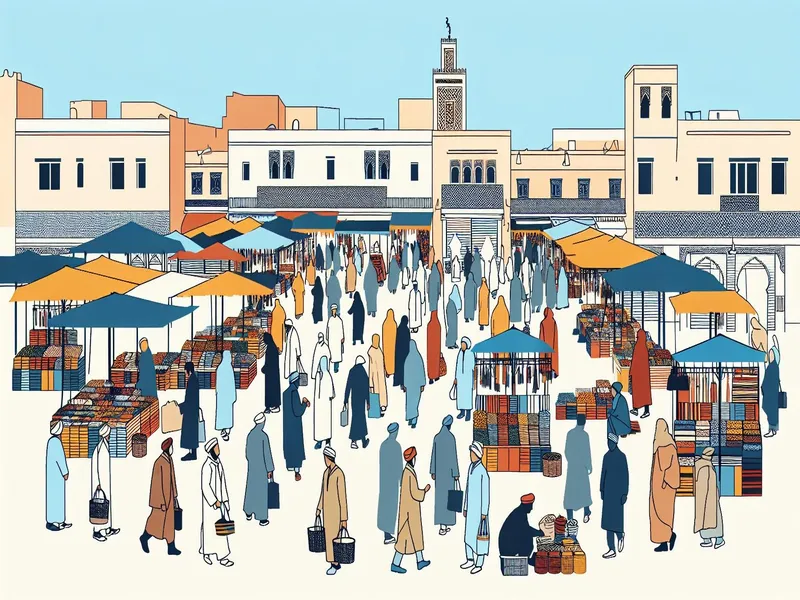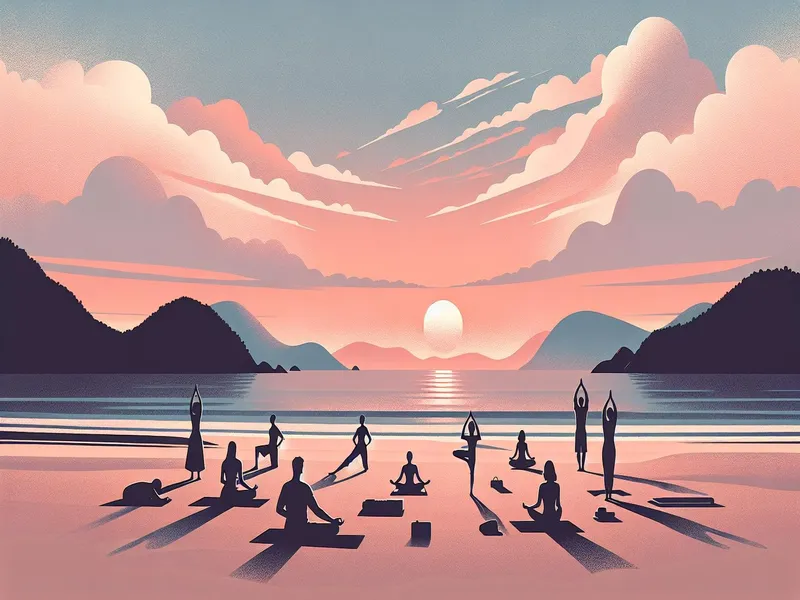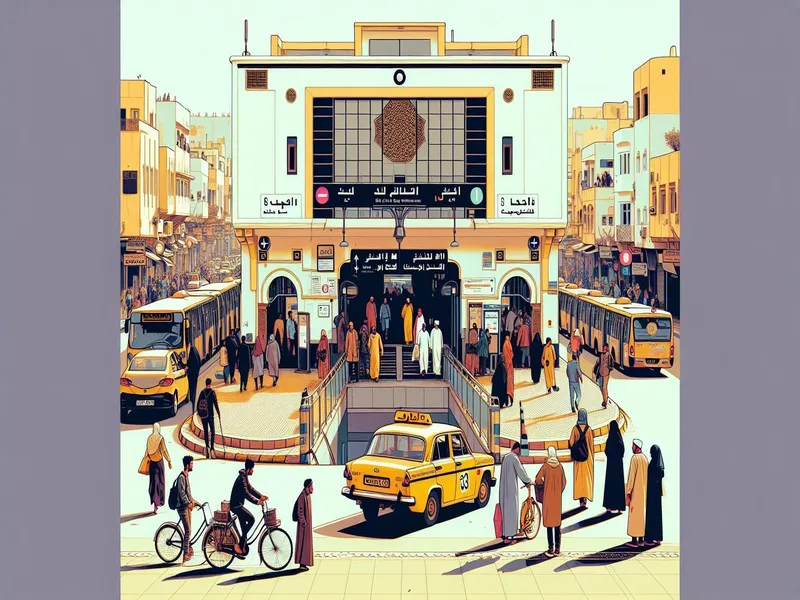
Whether you’re planning to wander through the bustling souks of Marrakech or explore the ancient medinas of Tunis, understanding how to navigate these urban landscapes is key to an unforgettable journey.
Without proper guidance, you might miss out on hidden gems or fall into common tourist traps. Exploring unfamiliar cities can be overwhelming and frustrating, leading to wasted time and missed opportunities.
Having spent years traveling through North Africa’s urban centers, I’ve gathered invaluable insights that will help you make the most of your trip. From transportation tips to must-visit spots, my experience ensures you won’t just visit these cities—you’ll truly experience them.
Whether you’re a solo traveler seeking adventure or a family looking for enriching activities, this guide is tailored to meet your needs. Check out our other travel activities for more inspiration on making your trip memorable.
I understand the challenges and excitement that come with exploring new places. Let me guide you through North Africa’s dynamic urban landscapes so you can enjoy every moment without worry.
Overview Of Urban Travel In North Africa
Urban travel in North Africa offers a unique blend of old-world charm and modern-day conveniences. Imagine wandering through the bustling souks (markets) of Marrakech, where the air is filled with the scent of spices, while scooters whiz by your side. It’s like stepping into a different world but still having that familiar buzz of city life.
Exploring these cities can be both exciting and overwhelming. I remember my first time in Tunis; the labyrinthine medinas (old quarters) felt like a maze. But once you get the hang of it, you’ll find hidden gems at every corner—cafes serving mint tea, artisan shops, and historical sites.
Transportation Options
Getting around is pretty straightforward once you know the ropes:
- Taxis: Widely available but always negotiate or ensure they use meters.
- Buses: Cheap and cover almost all areas, though they can be crowded.
- Metro Systems: Available in cities like Cairo and Algiers for efficient travel.
I found taxis to be convenient for late-night returns from vibrant nightlife spots like Jemaa el-Fnaa in Marrakech.
Must-Visit Locations
Each city has its must-see spots:
- Marrakech: The Majorelle Garden—a peaceful oasis amid chaos.
- Tunis: Bardo National Museum—home to some stunning mosaics.
- Cairo: Khan El Khalili Bazaar—perfect for souvenir shopping.
These places offer insights into local culture while providing Instagram-worthy photo ops!
Local Tips
To make your experience smoother:
- Dress modestly out of respect for local customs.
- Learn basic phrases in Arabic or French; locals appreciate it.
- Always have cash as many smaller vendors don’t accept cards.
I learned this lesson the hard way when trying to buy an intricate carpet without enough cash on hand! A little preparation goes a long way here.
Key Urban Destinations

Exploring North Africa’s urban landscapes offers an exciting mix of ancient history and modern vibes. Here are some cities you shouldn’t miss.
Cairo, Egypt
Cairo is a city where the past and present collide in the most fascinating ways. You can explore the Pyramids of Giza one moment and then jump into the bustling streets of downtown Cairo the next. I remember walking through Khan El Khalili, a famous bazaar, feeling like I’d stepped back in time with its narrow alleys filled with spices, jewelry, and textiles. Don’t forget to visit The Egyptian Museum, home to King Tutankhamun’s treasures.
Tunis, Tunisia
Tunis blends rich history with contemporary life seamlessly. The medina of Tunis is a UNESCO World Heritage site full of winding streets and vibrant markets. When I visited Bardo National Museum, I was blown away by its extensive collection of Roman mosaics; it’s truly a must-see for any art lover. Modern-day Tunis offers fantastic cafes and restaurants along Avenue Habib Bourguiba, often called “the Champs-Élysées of Tunis.”
Algiers, Algeria
Algiers feels like an undiscovered gem with its stunning French colonial architecture juxtaposed against Mediterranean views. Walking through the Casbah felt like exploring a living museum—every turn led to hidden courtyards or historic mosques. For something unique, check out Notre Dame d’Afrique, offering panoramic views of the bay area. Algerian cuisine also surprised me with its flavorful tagines and fresh seafood dishes.
Casablanca, Morocco
Casablanca is more than just its iconic namesake film; it’s Morocco’s economic hub that still retains historical charm. Visiting Hassan II Mosque was awe-inspiring—the sheer scale and intricate details left me speechless. Strolling along La Corniche gave me Miami vibes but with Moroccan flair: think beach clubs mixed with traditional Moroccan eateries serving up delicious couscous and tagine dishes.
Transportation Options

Exploring North Africa’s bustling cities can be a thrilling experience. From the colorful souks to historical landmarks, getting around efficiently is key. Let’s jump into the various transportation options available.
Public Transit Systems
Public transit in North African cities like Cairo, Tunis, and Casablanca is pretty robust. You’ll find buses and metro systems that are both affordable and efficient. For instance, Cairo’s Metro runs across three lines covering major parts of the city, making it a quick way to dodge traffic jams.
- Buses: Cheap but can get crowded during peak hours.
- Metro: Fastest option; stations have signs in English for easy navigation.
- Trams: Available in some cities like Rabat and Algiers; scenic yet practical.
I once took the tram in Rabat—it gave me a beautiful tour of the city while saving time on commutes.
Taxis And Ride-Sharing Services
Taxis are everywhere, but negotiating fares can be a bit tricky unless you speak Arabic or French. I always recommend asking your hotel for an estimated fare to avoid overpaying.
- Traditional Taxis: Widely available; agree on fare before starting.
- Ride-Sharing Apps: Uber operates in some cities like Cairo and Casablanca—convenient if you prefer cashless payments.
One time in Marrakech, my taxi driver started playing local music which turned our ride into an impromptu mini-concert!
Walking And Biking
Walking through medinas (old towns) offers an intimate glimpse into daily life and hidden gems. If you’re up for it, biking can add an element of adventure too.
- Walking: Ideal for exploring narrow streets and markets; wear comfy shoes.
- Biking: Some cities offer bike rentals or tours—great for eco-friendly travelers.
Cultural And Historical Attractions
Exploring North Africa’s cities is like stepping into a living museum. Everywhere you turn, there’s history and culture waiting to be discovered.
Museums And Galleries
North Africa boasts some truly incredible museums and galleries. In Cairo, the Egyptian Museum houses over 120,000 artifacts, including the treasures of Tutankhamun. When I visited, seeing the golden mask up close was surreal—like meeting an ancient VIP.
In Tunis, don’t miss the Bardo National Museum. It’s famed for its extensive collection of Roman mosaics. Walking through its halls, you can almost hear gladiators clashing in ancient arenas.
Marrakech offers a different vibe with places like the Yves Saint Laurent Museum. Fashion lovers will appreciate how it showcases YSL’s creative genius amidst vibrant Moroccan designs.
Historic Sites And Monuments
If you’re a history buff, North Africa won’t disappoint. In Algiers, you’ll find the Casbah—a UNESCO World Heritage site filled with winding streets and historic Ottoman palaces. It’s easy to get lost here but that’s part of the charm.
The Pyramids of Giza in Cairo are iconic for a reason; standing before these massive structures feels like traveling millennia back in time. Seriously, it’s mind-blowing how they built these giants without modern technology!
Over in Casablanca, make sure to visit the Hassan II Mosque—the largest mosque in Africa. Its stunning architecture and oceanfront location provide a serene yet awe-inspiring experience that’s hard to forget.
Whether you’re wandering through ancient medinas or marveling at grand monuments, North Africa’s cultural attractions offer endless discoveries that transport you across time and space.
Culinary Experiences
Urban travel in North Africa isn’t complete without diving into the local culinary scene. From street food to fine dining, you’ll find a mix of traditional flavors and modern twists that make each city unique.
Street Food
Street food in North Africa is an adventure for your taste buds. Imagine walking through bustling markets and smelling the aroma of freshly grilled kebabs or sweet pastries like baklava. I remember my first bite of brik in Tunis—crispy pastry filled with egg, tuna, and spices—it was love at first crunch.
- Marrakech: Try msemen, a flaky flatbread often served with honey or jam.
- Cairo: Grab a koshari, a hearty mix of rice, pasta, lentils, and spicy tomato sauce topped with crispy onions.
- Tunis: Savor lablabi, a chickpea soup spiced up with harissa (a local chili paste).
These dishes not only fill your stomach but also tell stories of the culture and history behind them.
Fine Dining
Fine dining offers another layer to North Africa’s culinary world. Picture elegant restaurants where chefs are reimagining traditional dishes using modern techniques. During one visit to Casablanca, I dined at Rick’s Café, inspired by the classic movie “Casablanca”. The ambiance matched perfectly with their refined take on Moroccan cuisine.
- Algiers: Experience French-Algerian fusion at restaurants like Le Jardin d’Essai du Hamma.
- Marrakech: Dine at La Maison Arabe, where you can enjoy tagines enhanced by fresh local ingredients.
- Cairo: Visit Abou El Sid for a luxurious twist on Egyptian classics like stuffed pigeon and molokhia (a green leafy vegetable stew).
Whether you’re savoring street snacks or indulging in gourmet meals, North Africa’s cities offer something for every palate.
Safety And Travel Tips
Urban travel in North Africa can be a thrilling adventure. But, like any journey, it’s essential to stay safe and navigate wisely.
Exploring The Cities
Getting around cities like Marrakech, Tunis, or Cairo is easier than you might think. Public transport options are plentiful. Taxis: They’re everywhere and usually inexpensive. Just agree on a fare before starting your trip to avoid surprises. Buses: These are great for budget travelers but can be crowded during peak hours. Metro systems: Available in cities like Cairo and Algiers; they’re efficient and cheaper than taxis.
A funny thing happened to me once in Marrakech—I hopped on the wrong bus because I misunderstood the conductor’s French! It turned out to be an unexpected mini-tour of the city.
Staying Safe
Safety should always come first when traveling. Street smarts go a long way here:
- Keep valuables secure: Use a money belt or hidden pouch.
- Stay alert in crowded areas: Pickpockets love busy markets.
- Blend in: Dress modestly to respect local customs and avoid unwanted attention.
One time in Tunis, I avoided a potential scam by politely declining overly friendly offers for “guided tours.” Trust your instincts; if something feels off, it probably is.
By following these tips, you’ll have a safer, more enjoyable experience exploring the vibrant urban landscapes of North Africa.
The Bottom Line
Urban travel in North Africa is an adventure filled with rich history, vibrant culture, and unique culinary experiences. Each city offers its own blend of old-world charm and modern conveniences that make exploring these urban landscapes both exciting and rewarding.
Whether you’re wandering through the bustling souks of Marrakech, marveling at the historical treasures in Cairo, or enjoying the architectural beauty of Algiers and Casablanca, there’s something for everyone. With proper preparation and a bit of local knowledge, your journey will be smoother and more enjoyable.
From exploring public transportation to savoring local delicacies, every moment spent in these dynamic cities adds to the world of unforgettable memories. So pack your bags embrace the adventure and get ready to explore the fascinating urban heart of North Africa.